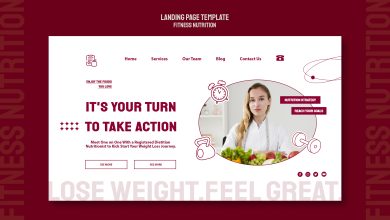Top Tips for Writing and Publishing Your First Cookbook

Writing a cookbook is a dream for many culinary enthusiasts, chefs, and home cooks who want to share their recipes and food philosophy with a wider audience. But creating a cookbook is more than just gathering recipes – it’s about storytelling, precision, and connecting with readers through every dish. From initial concept to final publication, each step requires planning, creativity, and attention to detail. Here are top tips for writing and publishing your first cookbook to help you bring your culinary vision to life.
1. Define Your Cookbook Concept and Target Audience
Before you start writing recipes, it’s essential to develop a clear concept for your cookbook. Think about what makes your collection unique and how you want it to resonate with your readers.
Questions to Help Shape Your Concept:
- What theme or cuisine will your cookbook focus on? For example, your cookbook might center on Mediterranean cuisine, vegan baking, or quick family dinners.
- Who is your target audience? Consider who will be using your cookbook. Are they beginner cooks, busy parents, or foodies looking for sophisticated dishes?
- What’s your unique angle? Think about what makes your cookbook different. It could be a focus on sustainability, budget-friendly recipes, or a particular dietary approach, like gluten-free or keto.
Having a focused concept will make your cookbook more cohesive and easier to market. It will also help you keep the reader’s needs in mind, ensuring that your content is engaging and relevant.
2. Organize Your Recipes and Outline Your Chapters
With your concept in place, start organizing your recipes and structuring the book. Decide on the chapters, sections, or themes that will shape your cookbook.
Structuring Your Cookbook:
- Group Recipes Logically: Organize recipes into logical sections, like “Appetizers,” “Main Courses,” “Desserts,” or by ingredients, seasons, or dietary needs.
- Create a Chapter Outline: Draft an outline that lists each chapter and the recipes it will contain. This gives you a visual structure for your cookbook and helps with pacing and flow.
- Consider Additional Content: Think about including an introduction, cooking tips, ingredient explanations, or a section on kitchen tools. These extra details provide value to readers and give your cookbook more depth.
Having an organized outline keeps the project manageable and ensures that your cookbook flows well from one chapter to the next.
3. Perfect Each Recipe with Testing and Precision
Accuracy is crucial in cookbook writing. Each recipe needs to be clear, reliable, and easy to follow, so readers can recreate your dishes with confidence. Testing your recipes thoroughly will help you achieve this.
Recipe Testing Tips:
- Test Multiple Times: Cook each recipe multiple times to ensure it works consistently. If possible, have friends or family test the recipes as well to provide feedback.
- Measure Accurately: Use standard measurements (cups, grams, teaspoons) and specify details like oven temperature, cooking time, and ingredient quantities.
- Write Clear Instructions: Avoid ambiguity in instructions. Instead of “cook until done,” specify details like “simmer for 10 minutes until the sauce thickens.”
- Include Useful Tips: Add helpful information for readers, such as substitutions for ingredients, storage tips, or ideas for serving.
Accurate, well-tested recipes build trust with your readers and enhance their cooking experience, making them more likely to recommend your book.
4. Focus on Visual Appeal with High-Quality Photos
A picture is worth a thousand words, especially in cookbooks. High-quality photos not only make your recipes look delicious but also show readers what to expect when they make each dish.
Tips for Cookbook Photography:
- Hire a Professional Food Photographer: If your budget allows, work with a food photographer who can capture your dishes beautifully. They’ll understand lighting, angles, and styling to make the food look appealing.
- Do It Yourself: If hiring a photographer isn’t feasible, consider investing in a good camera and taking an online course in food photography. Use natural lighting, experiment with angles, and keep the background simple.
- Plan a Consistent Style: Decide on a consistent aesthetic, such as bright and airy or dark and moody. This helps give your cookbook a cohesive look.
- Showcase Key Steps: Including step-by-step photos for complex techniques can make your recipes easier to follow, enhancing the reader experience.
Stunning visuals can make a cookbook irresistible, helping readers feel excited and confident about trying your recipes.
5. Craft Engaging and Personal Stories
A cookbook isn’t just a collection of recipes; it’s an opportunity to share your story, inspirations, and passion for cooking. Personal stories can create a deeper connection with readers, turning your cookbook into a meaningful experience.
Ideas for Adding Personal Touches:
- Include an Introduction: Start with an introduction that explains your journey, the inspiration behind the book, and what readers can expect.
- Share Stories Behind Recipes: Provide context for each recipe. Share where it came from, a memory associated with it, or why it’s meaningful to you.
- Offer Insights and Tips: Add a “chef’s note” or “pro tips” section to give readers extra advice, fun facts, or alternatives.
Personal storytelling adds warmth and personality to your cookbook, making it feel like a shared experience rather than a list of instructions.
6. Choose a Publishing Path: Traditional or Self-Publishing
Once your cookbook is ready, decide whether to pursue traditional publishing or self-publishing. Each option has its advantages, depending on your goals, timeline, and budget.
Traditional Publishing:
- Pros: Working with a publisher provides editorial, design, and marketing support, along with potential for wider distribution.
- Cons: It can be competitive to secure a publishing deal, and the process may take longer. Publishers also take a portion of the royalties.
- How to Start: Consider creating a proposal that outlines your concept, audience, sample recipes, and marketing ideas. Reach out to agents or publishers who specialize in cookbooks.
Self-Publishing:
- Pros: You retain creative control, earn a higher percentage of royalties, and have flexibility over the publishing timeline.
- Cons: Self-publishing requires a larger upfront investment for design, printing, and marketing, and it may be harder to gain bookstore distribution.
- How to Start: Research self-publishing platforms, like Amazon Kindle Direct Publishing or IngramSpark. Plan for editing, design, and printing costs to ensure a professional-quality product.
Each path has unique considerations, so weigh the pros and cons carefully to choose the best route for your book.
7. Promote Your Cookbook and Connect with Readers
Effective marketing is crucial to reaching your audience and building excitement around your cookbook. Create a marketing plan that connects you with readers and helps drive sales.
Marketing Strategies for Cookbooks:
- Social Media Promotion: Use platforms like Instagram, Pinterest, and Facebook to share recipe teasers, behind-the-scenes content, and announcements. Create a hashtag for your cookbook to encourage engagement.
- Collaborate with Influencers: Reach out to food bloggers, chefs, or influencers who might be interested in reviewing or promoting your cookbook.
- Host a Launch Event or Virtual Q&A: Celebrate your book launch with a live cooking demo, Q&A, or book signing. Virtual events are especially effective for reaching a wide audience.
- Leverage Your Network: Reach out to local bookstores, cooking schools, or culinary communities to feature or stock your book.
A well-thought-out marketing plan will help you connect with potential readers, build a loyal following, and create momentum for your cookbook.
Conclusion
Writing and publishing your first cookbook is a rewarding journey that allows you to share your culinary expertise and connect with food lovers everywhere. By focusing on a unique concept, perfecting each recipe, adding beautiful visuals, and sharing personal stories, you’ll create a cookbook that resonates with readers. Choosing the right publishing path and marketing your book effectively will help you reach a wider audience and turn your dream into reality. Embrace the process, and you’ll not only create a cookbook but a lasting legacy of your passion for cooking.





